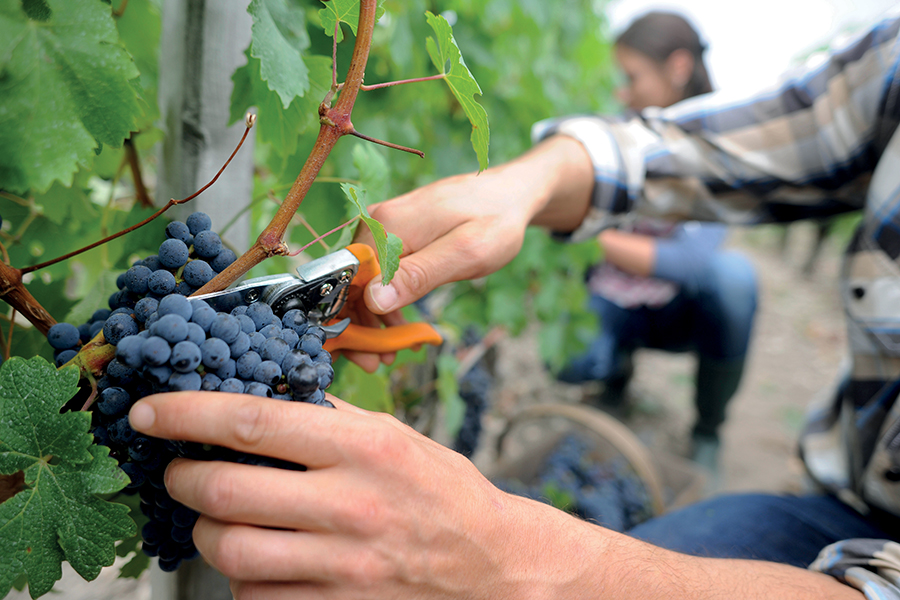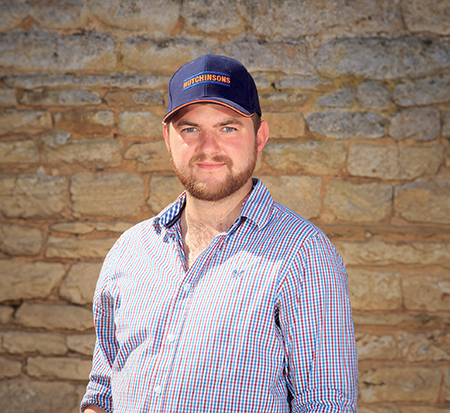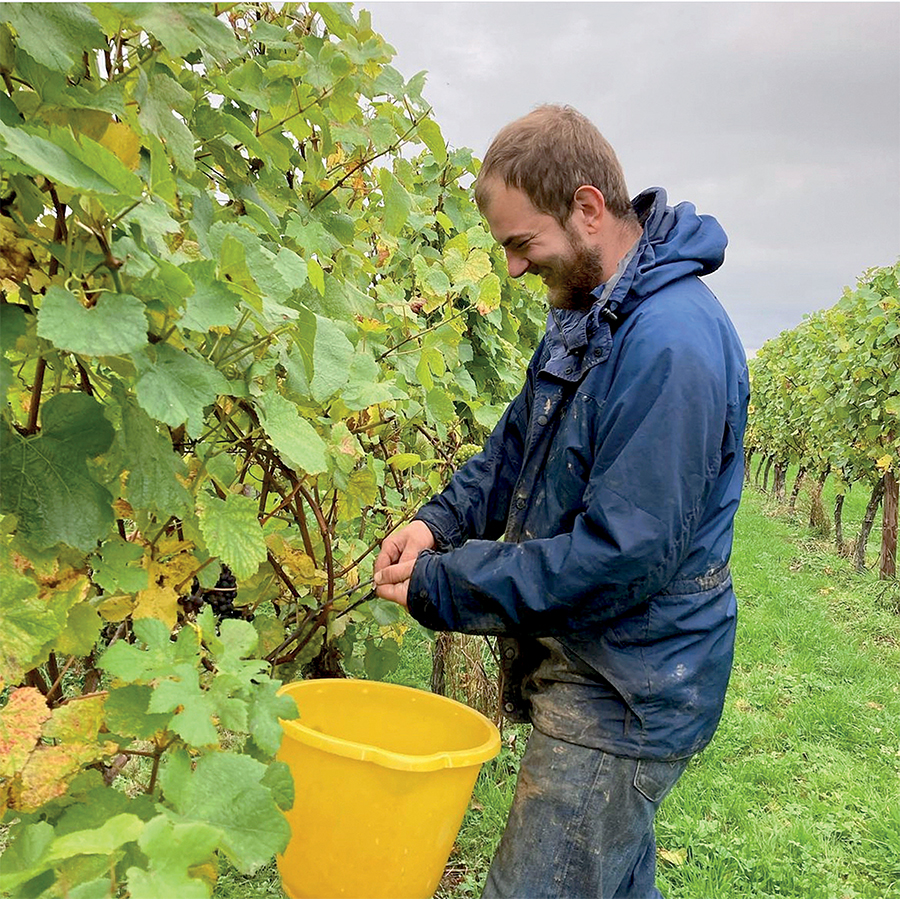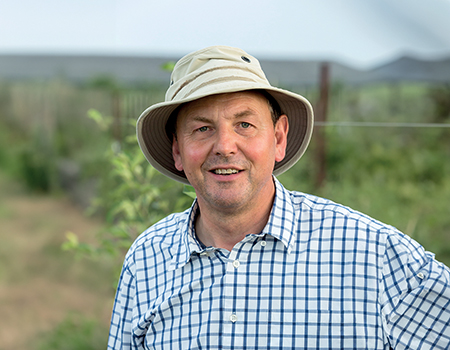Planning for a hassle-free harvest
21st August 2024
As the start of the grape harvest approaches, Fruit & Vine gets some expert advice about how to make it run smoothly and make the most of this season’s crop.

With a narrow window of opportunity in which grapes need to be picked to achieve the desired quality, careful planning is essential for any vineyard manager. Throw in the added complexities associated with the weather, pests, late-season diseases, winery capacity, labour and transport, and there is plenty to consider before picking begins.
For early cultivars such as Siegerebbe, Solaris and Rondo, picking typically starts in the first half of September on the earliest sites, while for late-maturing varieties like Chardonnay, Seyval and Pinot Noir (late), it may well be going on into late October or early November, depending on the weather during ripening.
Start with staff and logistics

Labour availability remains a big issue, especially when the timing of grape harvests competes with other seasonal demands, so if not done already, prioritise organising labour and logistics, says East Anglia-based Hutchinsons agronomist, Will Robinson.
Pickers, whether a hired gang of paid workers or local volunteers, should be booked early, with individual responsibilities planned out, he says.
“It’s important to build a good team of pickers and keep them happy and motivated, recognising that local volunteers may well expect wine and lunch.”
It is known that enthusiastic staff give ‘discretionary effort’ over and above doing the bare minimum, so productivity can benefit.
Other practicalities to consider include:
- Check winery capacity, estimated delivery dates, and how they want to receive grapes (e.g. 25kg baskets or 250kg Dolav boxes)
- Organise containers/bins/baskets/buckets/crates
- Identify where pallets need to be, check turning circles, access and other logistics, such as where to put fresh containers for pickers
- Ensure everything is in place for staff well-being (toilets, food, etc), transport, tools, etc
- Plan health and safety requirements, including risk assessments and any training required – ensure foreign language versions of guidance are available if needed.
Botrytis evaluation
When preparing for harvest, if there are any bunches suffering from botrytis, Will advises growers to assess how much of the affected bunches to salvage. Considerations include what percentage of botrytis to allow in picked bunches; how long it will take to remove the affected area from the bunch; and how much infected juice will remain on the bunch if traveling a long distance.
“Zero botrytis is the main aim throughout the season, but as the harvest goes on, and the sugars continue to rise, some infection is usually seen.”
Haulage to the winery may also need to be considered when deciding on botrytis thresholds, as grapes in transit for longer periods, for example in unrefrigerated overnight freight, may be more at risk of quality issues.
Monitor grape readiness
Deciding when to start harvest is perhaps the biggest decision growers make in terms of wine quality, says Hutchinsons agronomist, Rob Saunders.
“With grapes being such a perishable commodity, there is little room for delay once crops hit the quality ‘sweet spot’ for Brix and acidity levels.
“Good communication with your winery is essential for hitting the optimum harvest timing and ensuring the daily pressing capacity is there when you need it. Be realistic about the volume of grapes expected and when they will be ready, and keep the winemaker informed if things change.”
For growers with newly established vines approaching their first harvest, Rob cautions against leaving ripe bunches hanging on vines too long in an attempt to hold on for the higher potential alcohol levels needed for still wines. Doing so risks diminishing the life expectancy of young vines, by diminishing the carbohydrate reserves that would otherwise be laid down for the winter dormancy period, ready to be called upon for strong early growth next spring, he says.

“In exceptional years, such as 2022, the weather may allow growers to achieve potential alcohol levels of 13–14%, but generally in the UK, unless conditions are very favourable, the aim should be to ‘pick for sparkling’ in the first harvest, targeting lower potential alcohol levels of 10–11%.”
In unsettled autumns, botrytis is an inherent risk when holding out for rising Brix and falling acidity, so it is important to maintain disease control right up to harvest, although always adhere to harvest intervals on any products used, adds Rob.
He also points out that keeping vines well-nourished right through to the end of the season will influence grape quality. Indeed, potassium (applied in potassium sulphate form) is particularly useful for supporting Brix development, while some research shows molybdenum has a role in the mobilisation and accumulation of sugars in grapes.
Results from tissue testing of leaf blades collected at veraison can be useful for identifying potential deficiencies that need rectifying. “Alternatively, you could look back at previous soil tests to see which nutrients might still be lacking.
“There is a range of nutritional products available for late-season use, so talk to your agronomist about the most appropriate options.”
In the run-up to harvest, growers should continue to manage canopies well to maintain the optimum leaf-to-bunch ratio of 15:1, to ensure leaves can keep feeding the maturing bunches, while also allowing adequate exposure to sunlight for ripening, he adds.
Quality control before picking
To help speed up picking work rates, Rob recommends going through the vineyard before harvest to remove underripe bunches, or those that have succumbed to botrytis or mildew, and carry out some leaf stripping to expose healthy bunches.
Doing so can benefit juice quality by reducing the risk of diseased grapes tainting the wine, while also allowing pickers to focus on picking healthy bunches, without having to worry about grading or quality control. “It is of course, reliant on having the labour available before the main harvest period begins.”
Trimming vegetative cover in alleyways and removing tall weeds, such as thistles, can also make life easier for picking teams and improve work rates.
Protect crops
Given the wet season so far, managing botrytis bunch rot risk is understandably at the forefront of many growers’ minds, and must be guarded against right up to harvest – especially if August and September weather is unsettled.
Risk varies according to cultivar, being greatest in those with tight bunches where the pressure is more likely to build up to the point where berries pressing on each other give rise to splits, allowing infection to take hold, says Rob.
“A range of control options are available, but the most appropriate depends on the estimated picking date, and what has been used so far.”
Many traditional botryticides have a 21–28 day harvest interval, however there are various biological alternatives that offer application windows much closer to harvest, such as Vintec, Amylo-X, or Serenade.
The main fungicides include products based on fenhexamid, pyrimethanil, and cyprodinil + fludioxonil. Each of these can be used twice each in any one season, and rotating the active ingredients is important to reduce the possibility of repeated use allowing any resistant strains to become dominant.
Beyond that, Rob says the short harvest interval options are the generally slightly less effective biological controls, such as cerevisane, and those based on naturally occurring microbes, such as bacillus or a ureobasdium products.

“Bacillus products are a preventative option that work by colonising the same niches as botrytis pathogens would inhabit. Bacteria then produce anti-fungal compounds to prevent botrytis infection. With little or no harvest interval, they can be used right up to picking, but their effectiveness is dependent on achieving good spray coverage and colonisation of the target area (i.e. the bunches).”
While botrytis is the focus in the run-up to harvest, mildew risk should not be overlooked, Rob notes. Experience has found that foliar nutrition products such as Zynergy (containing copper, zinc and sulphur) and phosphites, such as Phorce, can increase the vine’s natural defence mechanisms, markedly reducing downy mildew risk.
Of the conventional fungicides, proquinazid offers the strongest and most persistent powdery mildew activity, so will provide useful and sustained protection in the run up to harvest, but there are harvest interval implications based on product choice, he says.
Do not overlook spotted wing drosophila (SWD), and the sour-rot complex that usually follows, he adds. “SWD has already been seen in higher numbers in other fruit crops this season – hardly surprising as they benefit from the humidity that’s characterised so much of the year so far.”
Wasps are a perennial problem as grapes ripen, especially in early maturing varieties like Solaris and Siegerrebe, and are very hard to control. Locating and destroying nests is theoretically the best approach, but is usually much easier said than done. Precision monitoring with multiple traps may help.
Plan a post-harvest feed
Finally, it is worth noting post-harvest foliar nutrition can be worthwhile to help ensure next year’s canes and buds are as healthy as possible, says Will Robinson.
“The post-harvest period is a key time when vines absorb nutrients and build carbohydrate reserves for winter and next spring, so there can be benefits from applying some foliar nutrients and trace elements, if there is opportunity before leaf fall.”
There are five main nutrients to consider, including potassium, phosphorus, boron, magnesium and copper.
“It is best to avoid applying nitrates post-harvest, or trying to prolong the ripening period in young vines; but in more mature vineyards, there could be merit in applying products such as Maxicrop or Megafol to help keep leaves green and functioning,” concludes Will.
Read more vine news
